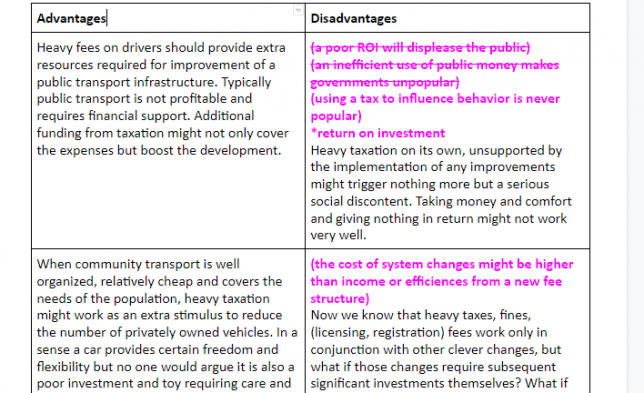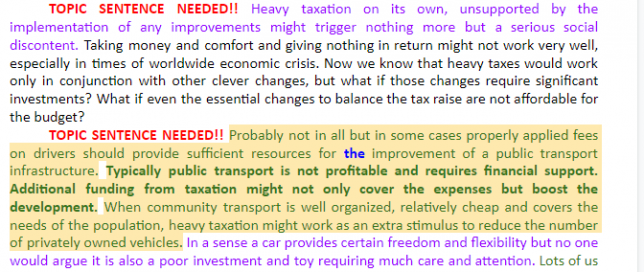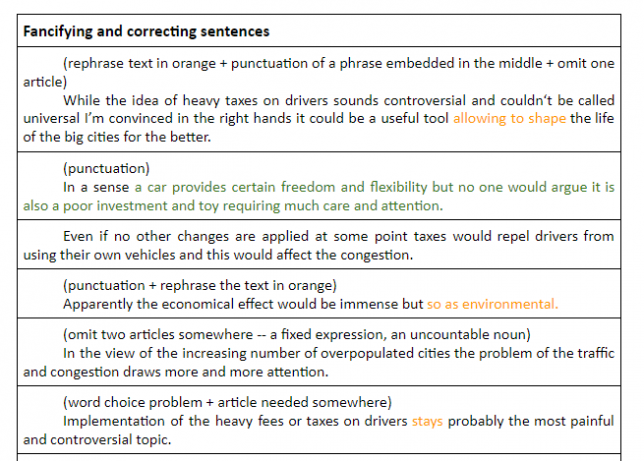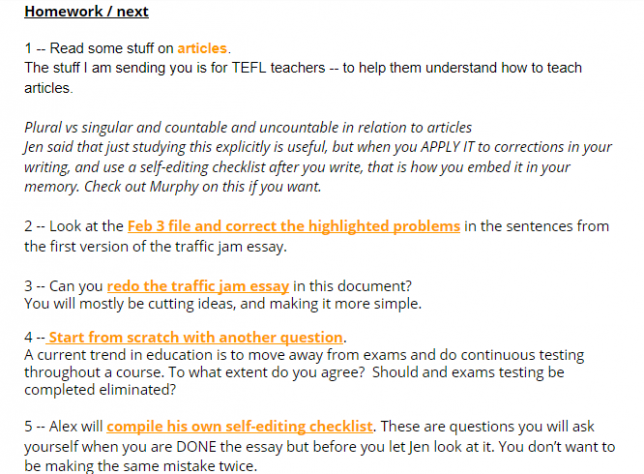The student relied too much on the word tax in the prompt. That is, he let the word ‘tax’ in the prompt determine and even limit the range of ideas he plugged into his planning table. I pointed out to him that it is good idea to think for a few minutes through the larger issue that the prompt is referring to before writing. In this case, municipalities or states probably use a range of incentives and penalties to influence how drivers drive, and when and to encourage carpooling, etc. A writer should ask himself “What major issue in the world today is this prompt referring to?” and then do some background reading on this topic to gather ideas.

The student’s Task 2 best effort essay came back with just Band 6 for cohesion. The problem was that he filled up his planning table with his AEEs (assertions, extensions, examples) but didn’t take the time to name that point. When we worked together to distill his AEE into a point, we decided that “using a tax to influence behavior is never popular” was a nice summation of this disadvantage. He can use this summation in his clear position statement to foreshadow for the reader / Examiner what is coming in each paragraph.

This essay came back with just Band 6 for CC. If the writer had included a topic sentence this would have helped the reader understand the relationships between the first paragraph, and the two body paragraphs. A short and sweet topic sentence isn’t necessary for high stakes exams writing, necessarily. Signposting features / elements of cohesion like topic sentences are just features of good writing.

To improve LR (lexical resource) and GRA (grammatical range and accuracy) in a ‘just in time’ feedback way, I copy a few sentences with errors and highlight the problem in orange, and invite the student to try to spot the error on his own. This helps the learner see where errors are systemic. Systemic errors are when grammar rules or collocations (LR) haven’t been fully or accurately understood and the learner can’t really self-correct. These kinds of errors are what to look up in your Grammar in Use Advanced and spend time doing the chapter on. Rather than “doing a grammar book from Unit 1 to Unit 30”, it makes sense to take a ‘just in time’ approach to learning what you need in response to errors you’re actually making in your writing.

Here is what the homework will look like. This student did a best effort Task 2 with attention to all the steps of my table planning method. You can see that he’ll consolidate this skill by doing another essay with a focus on this method, as well as revising today’s essay according to my feedback.

This learner will start to collect errors for his self-editing checklist. He’ll use this list after writing an essay or a letter (or anything else) as a reminder of his typical errors. This will consolidate the correction, and make the writer a better and faster editor of his own writing, as he writes. Many students have told me this trick translates well into the exam room, and they find themselves correcting little mistakes as they write. This can result in a better band for GRA (grammatical range and accuracy) as well TR (task response).